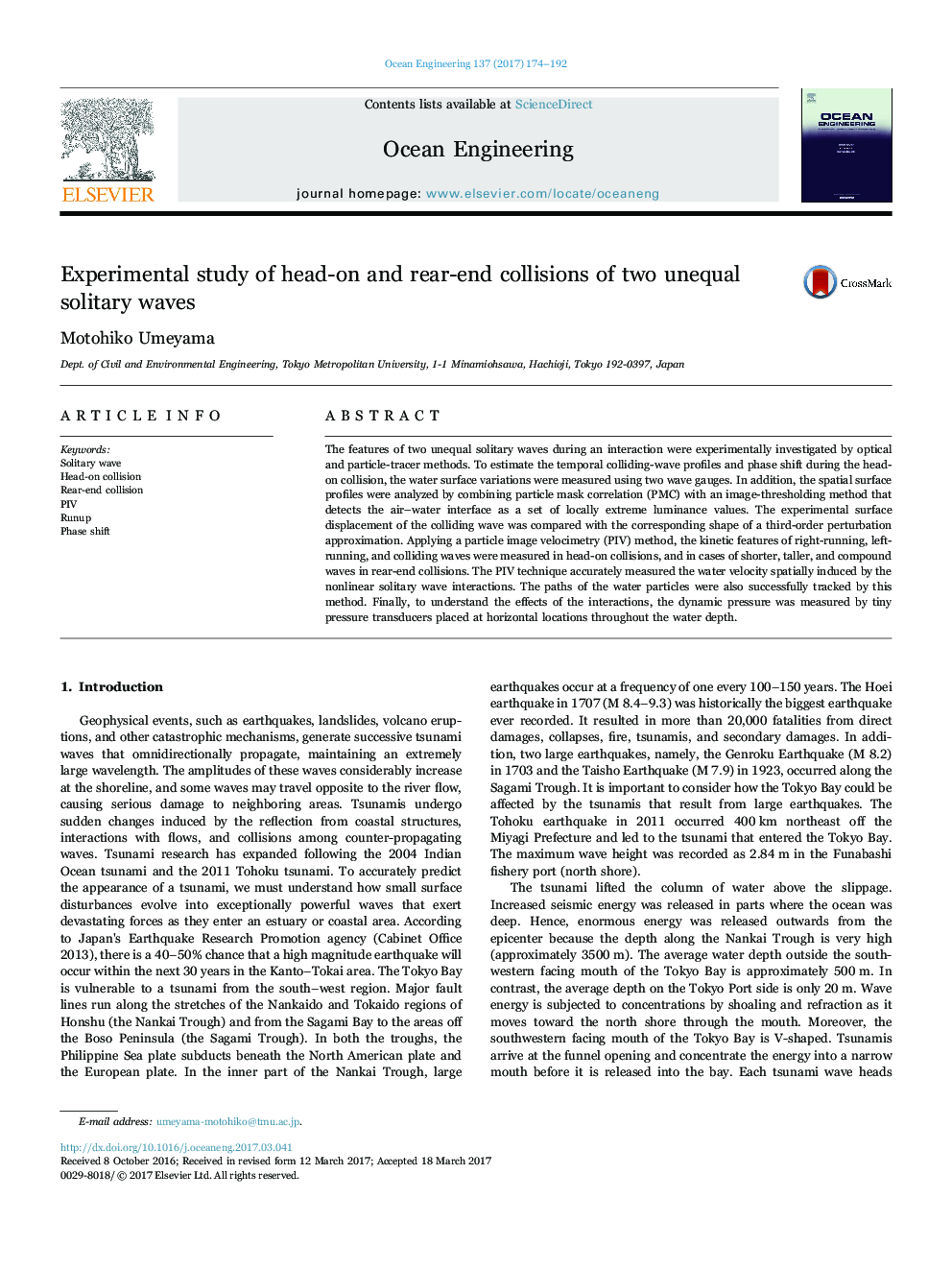| Article ID | Journal | Published Year | Pages | File Type |
|---|---|---|---|---|
| 5474245 | Ocean Engineering | 2017 | 19 Pages |
Abstract
The features of two unequal solitary waves during an interaction were experimentally investigated by optical and particle-tracer methods. To estimate the temporal colliding-wave profiles and phase shift during the head-on collision, the water surface variations were measured using two wave gauges. In addition, the spatial surface profiles were analyzed by combining particle mask correlation (PMC) with an image-thresholding method that detects the air-water interface as a set of locally extreme luminance values. The experimental surface displacement of the colliding wave was compared with the corresponding shape of a third-order perturbation approximation. Applying a particle image velocimetry (PIV) method, the kinetic features of right-running, left-running, and colliding waves were measured in head-on collisions, and in cases of shorter, taller, and compound waves in rear-end collisions. The PIV technique accurately measured the water velocity spatially induced by the nonlinear solitary wave interactions. The paths of the water particles were also successfully tracked by this method. Finally, to understand the effects of the interactions, the dynamic pressure was measured by tiny pressure transducers placed at horizontal locations throughout the water depth.
Related Topics
Physical Sciences and Engineering
Engineering
Ocean Engineering
Authors
Motohiko Umeyama,
